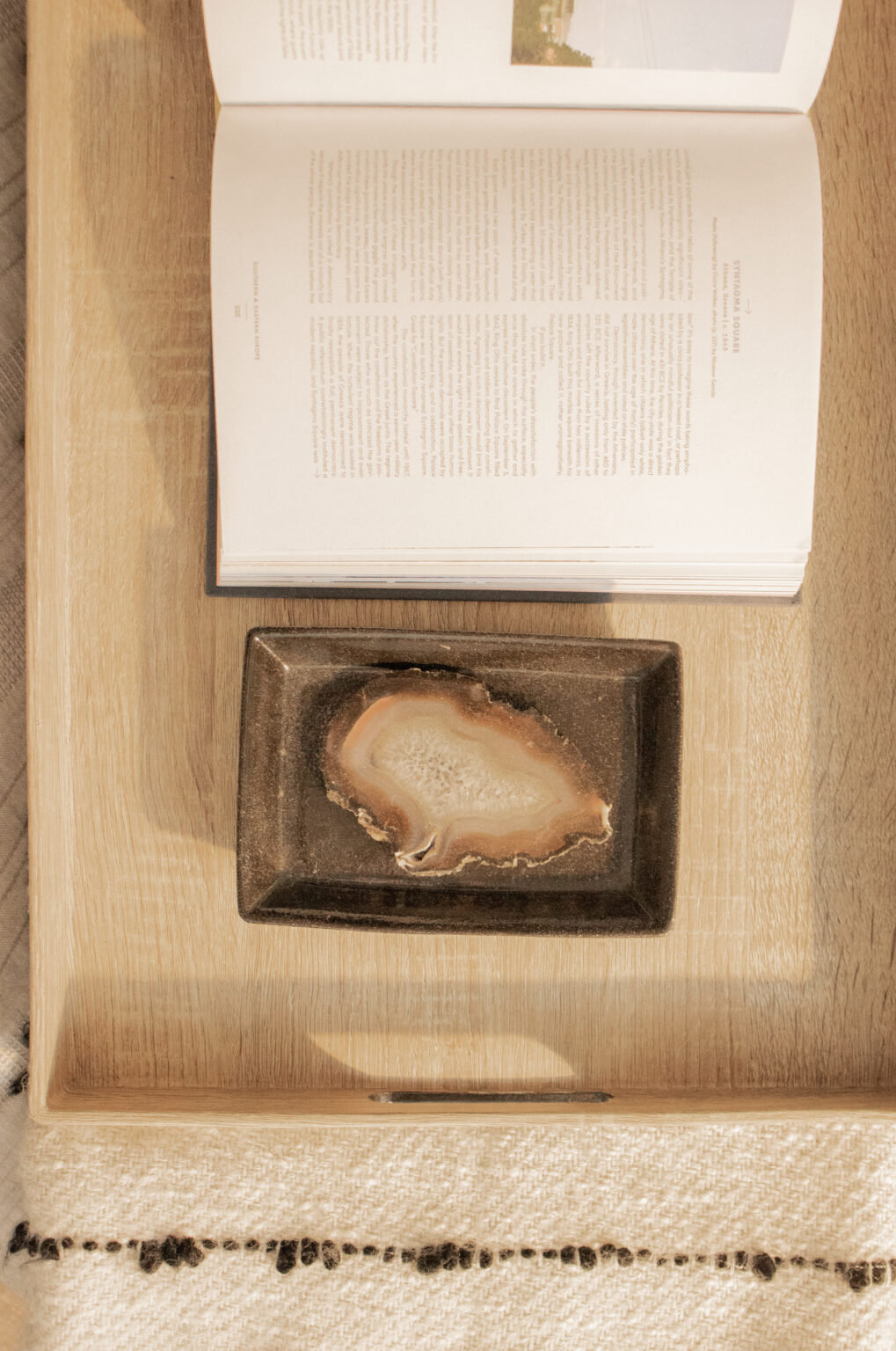An enticing opt-in offer is key to convincing someone to fork over their email address. To work, it needs to feel relevant, timely, and highly valuable to your ideal customer — but it does not have to be difficult to create.
Since your opt-in offer falls within your zone of genius, the creation process should be straightforward. The key is constraining your ideas to make sure your opt-in offer remains a teeny, tiny, non-intimidating taste of what you do for your clients.
What is an opt-in offer?
There are many different kinds of opt-in offers or “freebies” you can use to entice people to join your email list, like:
- eBooks
- PDFs
- Mini courses
- Cheatsheets
- Workbooks
- Printables
- Challenges
- Webinars (live or pre-recorded)
- Coupons / discount codes
- Quiz results
Why is an opt-in offer helpful?
Opt-in offers work because they promise immediate gratification. Instead of simply asking people to join your email list for newsletters/updates/sales at some later date, an opt-in offer gives them instant value.
But, aside from helping you convert more strangers into subscribers, opt-in offers also serve two other important purposes:
- Build a targeted list: By carefully crafting your opt-in offer based on the pain points of your ideal customer, you organically build a list of people most likely to find value in what you have to offer (i.e., your products, courses, coaching, services, etc.)
- Streamline conversions: With a value-packed freebie as their welcome gift, your new subscribers will instantly warm up to you — and your other content. When you show them from the get-go that you’re here to serve them in an impactful way, trust follows quickly.
Bite-Sized vs. Specialized Offers
Opt-in offers come in many flavors, but you can divide most of them into one of two categories:
Bite-sized opt-in offers are short, sweet, and to-the-point. They’re simple to create and easy for your subscribers to take action on. These are my favorite kind of opt-in, because most people will follow through in using them — meaning they actually experience the value you’re giving away.
Examples: Checklists, worksheets, templates
Specialized opt-ins are more comprehensive, so they deliver far more value, but they also require more commitment to utilize. So, some people who signup won’t ever get around to taking action. And, some people won’t signup at all if they sense the opt-in is more effort than they’re willing or able to put in at the moment.
Examples: Challenges, trainings, eBooks
So, why would you use a specialized opt-in if it takes longer to create and runs the risk of fewer people actually using it? The answer is simple: Higher quality leads.
The people who do signup for and utilize bigger offers are serious about taking action. Theoretically, that means they’re more likely to convert into paying customers and purchase your high-ticket offers.
How to Create an Opt-In Offer
Which one would be more useful to you, a busy professional with a sore neck: A 50-page eBook explaining all the body’s trigger points or a short guide illustrated with desk-friendly stretches?
By far, the biggest mistake you can make when creating an opt-in offer is trying to do too much with it. Even with a specialized or “heavyweight” offer, making it too big causes the value prop to get lost in the details.
Your opt-in offer should be a targeted, streamlined solution to a single problem — not a huge A-Z encyclopedia.
Your opt-in offer needs to be highly relevant to your reader and promise real, measurable value. Think about your ideal client. What problems are they facing right now?
Ideally, your opt-in offer will naturally draw people to the bigger framework, product, or solution you’re selling (or plan to sell!).
Best Practices
-
Solve a problem that ties into what you sell.
A physical therapist offering in-home sessions wouldn't want to build an opt-in offer around ergonomic desk chairs. While that might make a great blog post, it primes your audience for the wrong thing: Replacing their desk chair rather than signing up for a PT session. -
Target ONE specific problem and stick to it.
Opt-in offers should be highly specific and focused. This keeps them actionable and makes it easier for you to go really in-depth, showcasing your expertise without overwhelming the reader. Hold your offer to one standard: Actionable. -
Make sure you complete your opt-in funnel.
An offer doesn't stand on its own effectively; you'll need to build out an opt-in funnel consisting of a landing page for your offer, an email sequence that will be sent once someone signs up for your offer, and a bigger goal (i.e., making a purchase) that each component steers them towards.
#1 Define Your Offer
Put yourself in your audience’s shoes and ask yourself these questions:
- What results do they care about the most right now?
- How will your freebie be 10x better at helping them attain these results?
- What risks or hurdles will they think about when signing up for or using your freebie?
List out as many potential answers as you can, then ask yourself these questions to gain clarity into your idea and its validity:
- What’s the single most important result they want to unlock?
- What’s the primary aspect that will differentiate your freebie from the rest?
- What are the three most pressing risks or hurdles you’ll need to help your audience get past?
When answering these questions, get very specific. These points will help you narrow in on what will truly make your offer “irresistible.”
#2 Create Your Offer
Looks matter, but don’t get caught up in the design or layout of your freebie until you’ve planned out the substance of it.
Ask yourself: What can you repurpose or build upon? Comb through your blog posts, social media content, and past projects to see what you can pull from to speed up the creation process.
Sooner than later, start drafting your copy in Google Docs or another text editor. If you’re working on a webinar or video, don’t worry about scripting every word, that’ll make it feel stiff or overly rehearsed.
When you’re ready, take your finalized copy over to Canva or another design tool and bring it to life. You’ll also want to create mockups that you can use to promote your offer. Mockups help visitors quickly understand what they’ll receive. Plus, they make your offer feel more tangible and credible, adding a touch of professionalism.
#3 Add Your Offer to Your Website
Plan to publish an opt-in page for every opt-in offer you create. Treat it like a sales page for your freebie; use it to showcase the value and benefits of your opt-in offer so the decision to download it is effortless and obvious.
On your website:
- Design a dedicated landing page that showcases your opt-in offer. You can send people here from social media and from other pages of your website.
- Create an opt-in pop-up that appears when people have been on your site for so many minutes or when their cursor is moving toward the address bar (that’s known as an “exit intent” pop-up).
- Add a sticky header that appears at the top of relevant pages across your site with a link to the landing page where they can learn more about your opt-in offer
#4 Create New Offers
There’s no limit to the number of opt-in offers you can create. The more you have, the more potential entry points you’re creating. That means more opportunities for people to find you and join your list.
For example, an interior designer may offer multiple look-books by season or style. They might also create purpose-built guides, like: “Picking a Paint Color Based on Mood & Lighting” or “The Ultimate Guide to Wall Art Placement.” All these offers lead to the same list, but allow them to target more leads.
By using tags within your email marketing tool, you can segment your audience based on which opt-in offer they signed up for. Segmentation allows you to test out more aggressive offers on certain groups or personalize your sequences based on which resource a person opts to use.
#5 Share Your Offers Far & Wide
If you’ve been around my blog long enough, you’ve heard me say it a thousand times: Content marketing is 20% creation and 80% promotion. You need to get your opt-in offer in front of your audience every chance you get.
As soon as you create your first opt-in offer — or even before you finish it — get your landing page up so you can start collecting leads. Then, just as importantly, start sharing that page everywhere you can!
Off your website:
- Create 10+ social media posts all pointing to your opt-in offer’s page.
- Join Pinterest group boards and start pinning your posts. Also share on Instagram, Facebook, and wherever else you’re active.
- Share your new freebie with your existing email list as a “thank you” for being subscribed. Include a social media post in the email, in case they want to share it with their audience.
- Anytime you create any piece of content (blog post, social post, podcast episode, etc.) that relates to your freebie, mention it using a strong call-to-action.
If you’re uncertain or frustrated when it comes to sharing on social media, I encourage you to check out my free system: The 4-Tier Marketing Model.
Examples of Opt-In Offers
Need some inspiration? Check out these examples of high-converting opt-in offers.
Downloadable Resources

Jenna Kutcher’s “Goal Digger Printable Planner” is an example of a widely applicable resource that you can use in your personal or professional life!
When creating a downloadable resource of any nature, remember to keep it short, sweet, and actionable. You need people to engage with your resource — or they likely won’t engage with your email sequence, either.
Mini Course

Jenna Kutcher’s 5-day mini course walks you through the basics of choosing and setting up an email marketing platform, and figuring who to market your list to so you can start capturing subscribers.
With a mini course, it’s important to keep it laser-focused on one very specific problem or goal. By limiting her course to “5 days” you really get the sense that it is an actionable resource that isn’t going to weigh you down.
Virtual Events

Webinars, Q&As, coaching cohorts, and similar virtual get-togethers require little more than a webcam and good internet connection to create. Plus, they can drive massive engagement!
Lasting anywhere from 30- to 90-minutes, your presentation gives you the chance to entice your audience, teach them something meaningful, and introduce them to your paid offerings.
Did you know you only have to put on an event one time, even if you want to run it every week of the year? It’s known as an evergreen replay. And, no, people watching don’t have to know it’s a recording.
Remember: You want your audience to feel like they got immense value out of your event, so make it equal parts “training” and “sales.”
What's Next?
There’s no denying that people love freebies. Being able to “unlock” and download something offers a sense of instant gratification, and if you’ve packaged it up all nice and neat with a fun name, people will truly feel like they’ve hit the jackpot.
If you’re ready to create an opt-in funnel — or, better yet, a sales funnel! — I’ve got plenty of resources to help you. Check the links below for more inspiration and info.





